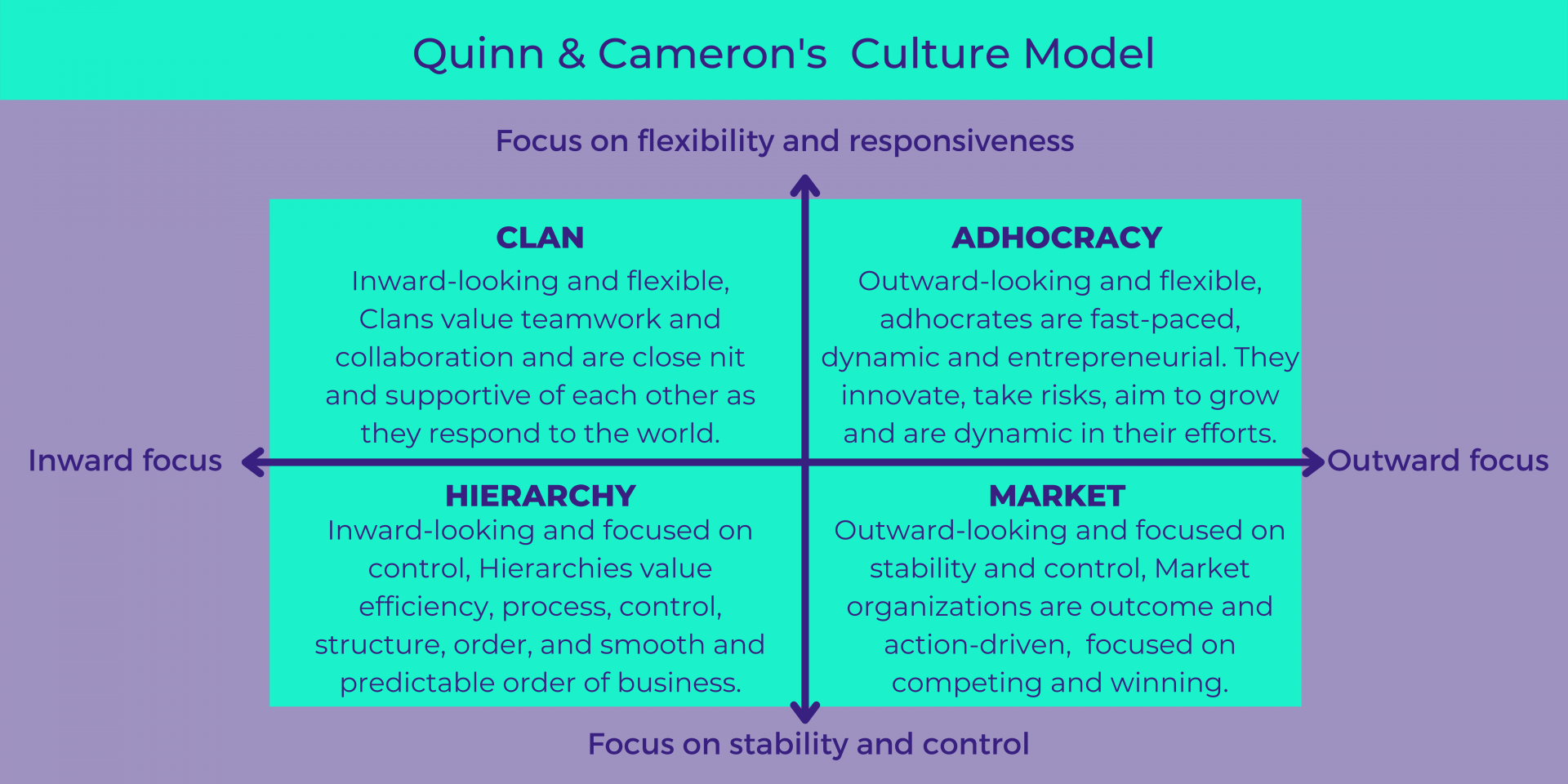The phrase “Organizational culture is the most important thing for us” has become a mantra in the past years. And perhaps this is good! The more focus on it, the better – more companies will pay attention to its specifics and try to understand why we need a type of culture to drive our development strategy. Now, where is the catch? All of the fuzz around organizational culture (named “OC” below for easier reading), the multiple articles named “5 simple steps to…” create a perception that navigating the right type of culture is something very easy to do, but is that true in reality?
This article will explore a few things:
- What is organizational culture and why do we need “types” of it;
- Showcase findings on the type of organizational culture of Bulgarian startups;
- What to do if you are running a startup – what type of culture should you strive for?
Well, as mentioned, this is not a “5 simple steps to creating the best organizational culture”, it is indeed a long article, so brace yourself, get cookies and start digging.
So what is organizational culture and why do we typologize it?
No matter which theory you take a look at, despite the small differences, it all combines around the following: organisational culture is a system of values and norms that the people in an organisation have identified, agree with and follow in the process of dealing with the external adaptation and internal integration of the organization. It’s simply “the way we do things around here”.
OC has a social control function, it is the guideline of how people should act in a variety of situations. Professors and consultants Kim Cameron and Robert Quinn define the core strength of OC in its uniting function that leads the organisation to success. It is the power that manages the behaviours of people. For a company to function effectively, its goals and strategy must be in line with its OC. That means that OC also performs a function of adaptability (to the external environment – in cultures with entrepreneurial values and innovation-oriented; non-adaptive are those that have a bureaucratic structure, followed by a strict hierarchy of roles and organizational growth).
There are more than 10 empirically proven models of OC. The reason why we need a typology is that each one comes with specific characteristics and allows us to be able to understand the differences between them, and what is more important to learn – how to implement that OC type that is more suitable for our organisation, one that will help it be successful. Each OC type differs from the others mainly by their dominant values and norms accepted by everyone in the group, in other words – what’s most important for that group. And since companies are run by different people, we cannot expect them all to have the same understanding of what is right. That is even more applicable for startups, where the culture is formed mainly by the founders and adopted, but also modified, by the first members of the team.
Jennifer Chatman and Charles O`Reilly define 7 core values: innovation, stability, respect for people, orientation to result, attention to detail, teamwork, aggressiveness. And what makes each organisation unique is the specific order in which these values are put in the organizational hierarchy. Daniel Dennison finds that culture has 4 main characteristics and they can influence the effectiveness of each organisation. They are consistency, adaptation, mission and engagement. These values translate into guidelines on how to do things, how to make decisions, etc.
Тhe Model of Competing Values of K. Cameron and R. Quinn is well wide-spread in the business world and it is easy to understand. It identifies 4 main types of OC:
- Hierarchical – with the following characteristics: strictly structured work environment; specific procedures govern employee behaviour; stability, predictability, efficiency, maintaining an efficient work process;
- Market – with the following characteristics: focused attention on transactions with external sites; concluding deals to provide market advantage; ambitious goals; focus on productivity and competitiveness;
- Clan – with the following characteristics: collectivist, with a focus on “we”; members share values, goals, work in a team and are empathetic to each other;
- Adhocratic – with the following characteristics: adaptation to changing markets, successful operating models: innovation and development of new ways to reach customers; leading vision for the future, there is organizational anarchy.
According to the authors, 80% of organizations develop a dominant cultural type.
What is the OC profile of the Bulgarian startups?
I conducted a research of Bulgarian startup companies in 2017 and 2018, aiming at identifying their OC profile and suggesting a culture type framework that startups could follow in order to be successful (the research uses the competing value framework to explore the OC of startups).
Given that startups operate in a highly competitive environment and their products compete with those of organizations that have experience, already established image and proven market positions, it is surprising that the Market dimension remains well behind the Clan (leading) and Adhocratic ones, which turned out to be the dominant types.
The Clan type of OC resembles a “family structure”. The desire of those involved in start-ups is to be accepted as a “family”, this is a distinctive feature that differentiates them from large corporations and they are proud of having this type of relationship in the workplace. This, in itself highlights the characteristics of the company profile such as internal unity, shared goals, empathy, teamwork, a strong sense of “we”, an atmosphere of freedom of action and opportunities for decision-making by the individual member. There are few rules and procedures, it relies on collective control and collective awareness of overall success. The number of levels of management is minimal, there are no formalities; self-initiative and proactivity are encouraged. The friendly work environment is another reason for the pride of start-ups and they use it as a major factor in differentiating from corporations and thus attracting new members. The environment allows people to be their authentic selves and share their opinions, which creates a personal sense of significance and is a strong motivator. And the lack of processes, the promotion of transparency and a sharing environment allow these individuals to develop their abilities. Success in Clan organizations is accepted as maintaining a favorable organizational climate and is understood as caring for the people who are part of the organization.
The Adhocratic type of culture is also very pronounced in the profile of Bulgarian startups. This dimension has a focus on pioneering initiatives and strong innovation. New solutions are being sought and new products are being created. Leaders encourage the development of creative and out-of-the-box thinking and even expect it from the people who are involved in the company. But they are also not clearly highlighted as leaders, the power is related to a project or a momentary need, and this is both tempting and positive, because it avoids excessive centralization and formalization, however it brings the potential feeling of chaos and lack of responsibility.
So far, nothing too difficult or overwhelmingly surprising. Here’s where it gets a bit more complex, pay attention:
The relatively close values of the Clan and Adhocratic dimensions of OC is not a surprising phenomenon at all. They are close in nature because they share the same orientations regarding flexibility and autonomy of the company.

The difference is that the Clan is focused on internal integration, while the other (Adhocratic) – on the external environment. In the context of startups, this can be positive, as the members of the company are motivated to give their best and make the most of their skills and knowledge, while also feeling that they have a true impact. On the other hand, the lack of centralized power and control can lead to a lack of responsibility and inability to make an appropriate decision in a situation that is vital for the continued development of the startup or even its existence. Adhocracy is a temporary phenomenon – for companies it should be a phase they go through and transform into something else. Adhocratic culture does not create stability. It is very useful as a subculture, when a change or project requires an innovative way of working. Adhocratic forms are not necessarily ineffective, but whether it is the most appropriate dominant type in startups and for how long is what is important to find out.
The study also reports a negative correlation between the Market and Clan cultural dimensions. This seems logical, as the orientations of the two are quite different – Clan-type organizations promote inclusion, non-competitiveness and commitment, while market-oriented organizations fight for supremacy, are highly competitive and oriented outside, to the customer and the market (the chart above). However, the orientation of startups towards the market, as well as the expressed adhocracy (which should be immanent for this type of companies in terms of their innovation and “market immaturity”) have negative effects on important prerequisites for organizational effectiveness. The external orientation (which requires adaptation to the environment) threatens the internal integration. It can create competition and hinder teamwork, so this is an expected result. The more market-oriented the newly formed companies are, the lower their group effectiveness is, and the stress of team members increases. Quite logically, if the preference of those involved in start-ups is to be “family”, then shifting the focus from “inside” to “outside” and from “person” to “market” would lead to higher levels of professional stress.
The comparison of the startups by “development stage” reveals an important trend in development – with time, the Clan orientation decreases, and the Adhocratic and Market orientation of the OC increase. Over the years, the company goes through a process of maturation and as a result of the experience gained thus far, it begins to change its direction, its focus, the ultimate overall goals, as well as the ways of management and decision making. Leaders are aware of the importance of this change, and while displacing the romantic family atmosphere, it helps them secure a place on the market. It is interesting to compare the results of this study with those of a study of companies in the advanced development stage in the IT sector in Bulgaria, conducted in 2017. The cultural profile of these companies is dominated by the Market culture, followed by the dimensions Adhocratic, Clan and lastly Hierarchical. In another study of companies in the same sector in 2014 the OC profile also has a leading market orientation, followed by Clan, Hierarchical and lastly Adhocratic culture.








